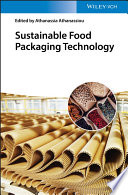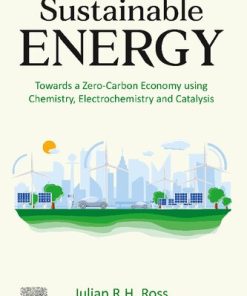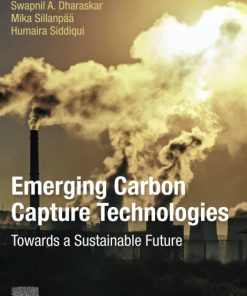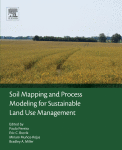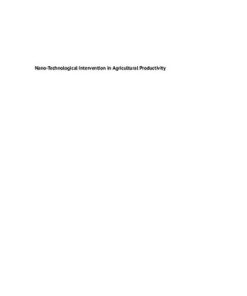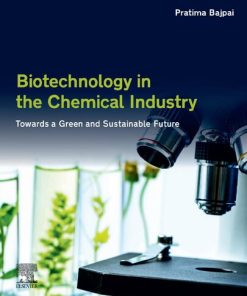Soil Bioremediation An Approach Towards Sustainable Technology 1st edition by Javid Parray 1119547938 9781119547938
$50.00 Original price was: $50.00.$25.00Current price is: $25.00.
Soil Bioremediation: An Approach Towards Sustainable Technology 1st edition by Javid A. Parray 1119547938 9781119547938 – Ebook PDF Instant Download/DeliveryISBN:
Full download Soil Bioremediation: An Approach Towards Sustainable Technology 1st edition after payment.
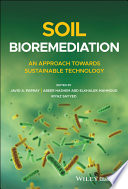
Product details:
ISBN-10 : 1119547938
ISBN-13 : 9781119547938
Author : Javid A. Parray
This book will discuss the effective and sustainable technological approaches for remediation of contaminates via eco-friendly usage of microbes. The primary focus will be on the role of microbes, particularly bacteria and fungi, for the degradation and removal of various xenobiotic substances in the environment. The book will also emphasize molecular approaches and biosynthetic pathways of microbes, and present gene and protein expression studies for bio-deterioration techniques. New innovative and sophisticated green technologies for waste minimization and waste control will be presented, as well as the potential of microbes for various techniques of bioremediation, including bio-sorption, bio-augmentation, bio-stimulation, to clean contaminated environments.
Soil Bioremediation: An Approach Towards Sustainable Technology 1st Table of contents:
1 In‐situ Bioremediation: An Eco‐sustainable Approach for the Decontamination of Polluted Sites
1.1 Introduction
1.2 Ex‐situ Versus In‐situ Bioremediation
1.3 In‐situ Bioremediation Techniques
1.4 Conclusion
References
2 Bioremediation: A Green Solution to avoid Pollution of the Environment
2.1 Introduction
2.2 Sources of Heavy Metals
2.3 Impacts of Heavy Metals on Soil and Microbial Activity
2.4 Fate of Pesticides and Its Biodegradation in Soil
2.5 Strategies of Bioremediation
2.6 Adaptive Mechanism of Bioremediation for Heavy Metals, Pesticides, and Herbicides
2.7 Behavior of Inorganic and Organic Pollutants in Soil
2.8 Environmental Implications of Bioremediation
2.9 Conclusion
References
3 Laccase: The Blue Copper Oxidase
3.1 What Is Laccase?
3.2 Distribution of Laccases
3.3 Application of Laccase
3.4 Conclusion
References
4 Genome Assessment: Functional Gene Identification Involved in Heavy Metal Tolerance and Detoxification
4.1 Introduction
4.2 Tolerance and Degradation Mechanisms of Toxic Metals by Microorganisms
4.3 Genetic Engineering in Bioremediation Processes for Some Major Elements
4.4 Biotechnological Intervention for Some Important Heavy Metals
4.5 Future Perspective
4.6 Conclusions
References
5 Bioremediation of Heavy Metal Ions Contaminated Soil
5.1 Introduction
5.2 Bioremediation
5.3 Phytoremediation
5.4 Analytical Methods in Bioremediation of Metals
5.5 Conclusion
References
6 Bioremediation of Dye Contaminated Soil
6.1 Introduction
6.2 History and Usage of Dyes
6.3 Classification of Dyes
6.4 Problems Due to Colored Textile Effluent
6.5 Physico‐Chemical Quality of Textile Effluents
6.6 Dye Decolorization/Degradation Techniques
6.7 Factors that Control the Discoloration of Microbial Dye
6.8 Conclusions
References
7 Composting and Bioremediation Potential of Thermophiles
7.1 Introduction
7.2 Heavy Metal Resistance Genes
7.3 Biotransformation‐Based Bioremediation
7.4 Future Perspectives
Acknowledgments
References
8 Ecological Perspectives of Halophilic Fungi and their Role in Bioremediation
8.1 Introduction
8.2 Hypersaline Inhabitant Fungi
8.3 Strategies Against the Hypersaline Environment
8.4 Ecological Perspectives of Hypersaline Fungi
8.5 Conclusions
References
9 Rhizobacteria‐Mediated Bioremediation: Insights and Future Perspectives
9.1 Introduction
9.2 Bioremediation: Rescue Plan by Natural Agents
9.3 Rhizoremediation
9.4 Rhizospheric Microbial Community
9.5 Practices that Improves Rhizoremediation
9.6 Future Perspective
9.7 Advantages of Rhizoremediation
9.8 Conclusion
Acknowledgment
References
10 Bioremediation Potential of Rhizobacteria associated with Plants Under Abiotic Metal Stress
10.1 Introduction
10.2 Mode of Action Rhizobacteria
10.3 Bioremediation
10.4 Genetically Modified Plant‐Associated Microbes for Heavy Metal Stress Tolerance
10.5 Highly Toxic Metals
10.6 Effects of Highly Toxic Metals on Plant Growth
10.7 Conclusion
References
11 Molecular and Enzymatic Mechanism Pathways of Degradation of Pesticides Pollutants
11.1 Introduction
11.2 Effect of Pesticides on Soil Enzymes
11.3 Introduction of Plasmids in Soil Bacteria
11.4 Microbial Degradation of Pesticides
11.5 Enzymatic Degradation
11.6 Organophosphorus Hydrolase and Organophosphorus Dehydrogenase (OPH and OPD)
11.7 Pesticide–Antibiotic Cross Resistance
11.8 Conclusions
Acknowledgments
References
12 Bioremediation of Heavy Metals and Other Toxic Substances by Microorganisms
12.1 Introduction
12.2 Sources of Heavy Metals
12.3 Effects of Heavy Metals on Plant, Microorganisms, and Human Health
12.4 Current Approaches for Remediation of Heavy Metals
12.5 Mechanisms Involved in Bioremediation
12.6 Types of Bioremediation
12.7 Strategies of Bioremediation
12.8 Factors Affecting Bioremediation
12.9 Pros and Cons of Applicability of Bioremediation Approaches Under Field Conditions
12.10 Conclusion and Future Prospects
References
13 Trends in Heavy Metal Remediation: An Environmental Perspective
13.1 Introduction
13.2 Sources of Heavy Metals
13.3 Heavy Metal Impacts
13.4 Current Scenario of Heavy Metals
13.5 Microorganisms and Remediation of Heavy Metals
13.6 Mechanism of Metal Tolerance by Resistant Species
13.7 Conclusion
People also search for Soil Bioremediation: An Approach Towards Sustainable Technology 1st:
soil bioremediation techniques
soil bioremediation meaning
soil bioremediation ppt
soil bioremediation pdf
soil bioremediation overview of technologies and trends
Tags:
Soil Bioremediation,An Approach Towards,Sustainable Technology,Javid Parray
You may also like…
Biology and other natural sciences - Plants: Agriculture and Forestry
Sustainable Food Packaging Technology 1st Edition Athanassia Athanassiou
Engineering - Automotive
Automotive Technology: A Systems Approach 7th Edition Jack Erjavec
Humanities and Social Sciences
Geography of Technology Transfer in China: A Glocal Network Approach Liu 9811274959 9789811274954
Politics & Philosophy
Technique - Energy
Emerging Carbon Capture Technologies: Towards a Sustainable Future 1st Edition Mohammad Khalid
Biology and other natural sciences - Plants: Agriculture and Forestry
Nano-Technological Intervention in Agricultural Productivity 1st Edition Javid A. Parray




